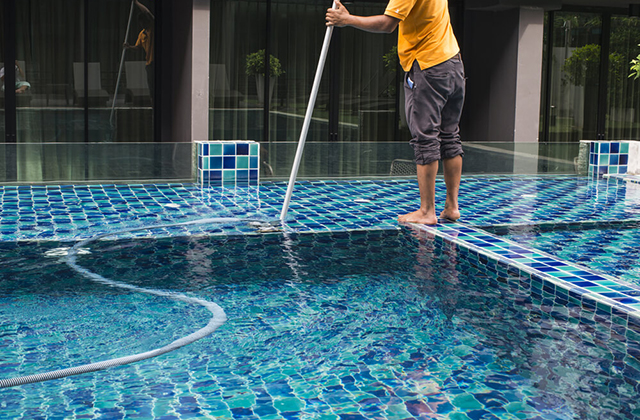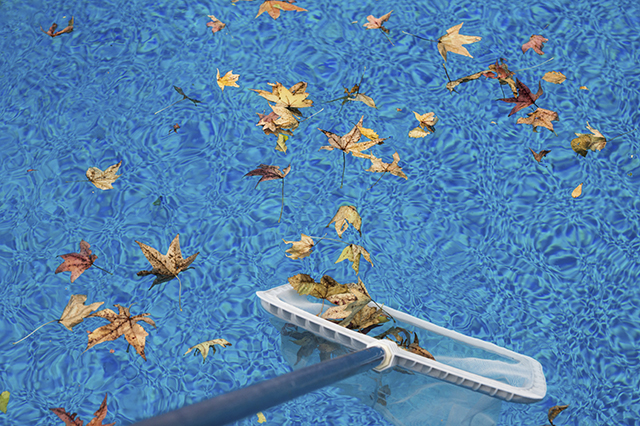I became saddened over the last couple of weeks as I have seen more and more news stories about children and adults dying in swimming-related deaths, many of which were due to negligence on the part of parents and supervising adults. Every summer, water and pool deaths rise dramatically. If you needed approval to build a pool, you will need approval to demolish it, and you also need a pool removal Perth service.
Swimming is the number one summer recreation activity and with that comes the need for increased personal safety and the empowerment of children and adults. Unfortunately, most people are ignorant of how hard it is to actually protect another person from a dangerous situation because they have no formal training. As a certified bodyguard and family protection specialist, I feel every parent or guardian needs to know a few simple facts to keep their children and family safe.

The Three Step Rule
On flat even ground, with good footing, it is virtually impossible to keep someone out of harm’s way if you are more than three steps away, whether that is accidentally stepping into traffic or being grabbed by a would-be attacker. In the world of protection we call this “the three step rule.”
In the water you do not even get three steps because water is just too hard to move in and has too many variables. In the water if you are beyond arms reach of your child and they have a problem, you are potentially facing disaster. I know this may seem almost unfathomable, but if you understand the science of personal and family safety you would look at your family’s protection dramatically differently.
The following are the main areas that every parent and child should take into consideration to keep your family safe when being around a swimming pool or other body of water.
Know What To Do In An Emergency Around Water
If a child is missing, check the water first. Every second counts in preventing death or disability.
Know how and when to call 9-1-1 or the local emergency number.
If you own a home pool or hot tub, have appropriate equipment, such as reaching or throwing equipment, a cell phone, life jackets and a first aid kit close by in a designated area.
Enroll in Red Cross home pool safety, water safety, first aid and CPR/AED courses to learn how to prevent and respond to emergencies.
Know the shortest route to the local hospital / medical facility.
Pool And Water Safety Tips For Parents And Adults
Actively supervise kids whenever they around the water-even if lifeguards are present. Do not just drop your kids off at the public pool or leave them at the beach. Designate a responsible adult to supervise. Never leave your child unattended.
Always stay within arm’s reach of young children and avoid distractions when supervising children around water.
Put your cell phone away. No phone call is worth your child’s life.
Every child is different, so enroll children in swimming lessons when you feel they are ready. Teach children how to tread water, float and stay by the shore.
Teach children to always ask permission to go near water.
Set time limits for swimming and playing in the water based on each child’s experience and ability.
Do not let anyone play around drains and suction fittings.
Do not allow young swimmers to have breath-holding contests.
Even if you do not plan on swimming, be cautious around natural bodies of water including ocean shorelines, rivers and lakes. Cold temperatures, currents and underwater hazards can make a fall into these bodies of water very dangerous.
Avoid using medication and alcohol when around pools or large bodies of water. Alcohol and medication impairs judgment, balance and coordination. Anything that affects swimming and diving skills should be avoided. Some medication can even effect your body’s ability to regulate its internal temperature.
When there are several adults present and children are swimming, rotate the responsibility of watching the children between the supervising adults. People can easily become distracted after even short lengths of time so switch off supervisors ever 20 minutes.
You can start introducing your baby to water when they are about 6 months old. Remember to always use waterproof diapers and change them frequently.
Whether you’re swimming in a backyard pool or in a lake, teach children to swim with an adult.
Older, more experienced swimmers should still swim with a partner every time. From the first time your kids swim, teach children to never go near or in water without an adult present.
Remember that swimming aids such as water wings or noodles are fun toys for kids, but they should never be used in place of a U.S. Coast Guard-approved personal flotation device.
Have young children or inexperienced swimmers wear U.S. Coast Guard-approved life jackets around water, but not without supervision.
When using inflatable or portable pools, remember to empty them immediately after use. Store them upside down and out of children’s reach.
Single drain and flat drain grates pose the greatest risk in pools. If you are installing a new pool or hot tub, install multiple drains. This minimizes the suction of any one drain, reducing risk of death or injury.
For existing pools make sure your protective measures include anti-entrapment drain covers and a safety vacuum release system to automatically release suction and shut down the pump should entrapment occur.
Regularly check to make sure drain covers are secure and have no cracks, and replace flat drain covers with dome-shaped ones. If a pool or hot tub has a broken, loose or missing drain cover, don’t use it.
Pool And Water Safety Tips For Children
Teach your child how to swim as early as possible. Children can vary greatly in the maturity level and desire to swim but make it mandatory for them to learn to swim early.
Ensure your children know to swim only in designated areas supervised by lifeguards.
Have children learn to perform CPR on children and adults, and update those skills regularly. This is a skill set that will benefit them for a lifetime.
Understand the basics of life-saving so that you can assist in a pool emergency.
Educate your children about the dangers of drain entanglement and entrapment and teach them to never play or swim near drains or suction outlets. Make sure kids swim only in areas designated for swimming.
Teach children that swimming in open water is not the same as swimming in a pool. They need to be aware of uneven surfaces, river currents, ocean undertow and changing weather.
Have a telephone close by when you or your family is using a pool or spa.
Make sure that your child knows that if a child is missing they need to look for him or her in the pool or spa first.
Share safety instructions with family, friends and neighbors.
Teach children that no one should ever swim alone.
Caution children against showing off and playing rough and explain the dangers of running and diving recklessly.
Train your child to never push others into the pool.
Ensure your child understands that when using water slides, always go feet first.
Before diving or sliding, check to be sure that other swimmers are out of the way.
Make sure children keep rescue devices and first aid supplies near the pool and know how to use them.
Teach children what to do in case of emergency. Training like “know go” and “yell tell” is a good place to start. An alarm bell that could summon help would also be a good idea.
Pool Equipment, Toys, And Surrounding Area Safety
Use non-slip materials on the pool deck, diving board and ladders.
Install and use a lockable safety cover on your spa.
Safety covers and pool alarms should be added as additional layers of protection to your pool.
Remove any structures that provide access to the pool, such as outdoor furniture, climbable trees, decorative walls and playground equipment.
Keep toys that are not in use away from the pool and out of sight. Toys can attract young children to the pool.
Electrical equipment should be installed by a licensed electrician in accordance with local safety codes.
Check with a professional pool contractor to be sure the depth is sufficient for a diving board or slide. Always put a slide in a deep area of the pool – never in shallow water.
There should be a fence at least six feet high around all sides of the pool with a locked gate to keep children out when there is no supervision and the fence should be constructed so it is difficult to climb. Lawn furniture, trees and shrubs should not be close enough to provide an easy boost over the fence. Locks and latches should not be easy for a child to open.
If your house serves as a fourth side of a fence around a pool, install door alarms and always use them. For additional protection, install window guards on windows facing pools or spas.
Install pool and gate alarms to alert you when children go near the water. Avoid using a side of the house as part of the fence; toddlers have wandered out through an open patio door or window and drowned.
Mark water depths conspicuously. Use a safety float line where the bottom slope deepens.
Above-ground pools: Install sturdy guard rails around the pool deck. Look for rolled rims on the metal shell to be sure the rims do not present a sharp cutting edge if someone falls. The access ladder to the deck should be sturdy and without protruding bolts or other sharp edges. The access ladder should swing up to prevent children from unauthorized entry or should be easily removable for secure storage away from the pool area.
Keep electrical appliances such as radios out of the pool area because of the hazard of electrical shock.
Install a door alarm, a window alarm or both to alert you if a child wanders into the pool area unsupervised.
Unfortunate Statistics
Drowning is the leading cause of unintentional injury death among children aged 1-4 years.
Drowning is the second leading cause of unintentional injury death among children 5-9 years.
More than 60% of fatal drownings of 0-4 year-olds occur in swimming pools.
The National Child Safety Council reports that 600 children and adults drown annually in swimming pools, 330 in home pools.
Do not let your child or any member of you family become an unfortunate statistic. Take water safety seriously and maintain due diligence and focus around any body of water.
Brett Lechtenberg is Utah’s foremost expert on personal and family safety. Brett has dedicated his life to educating people about family safety and personal security. Through his comprehensive lecture series, motivational speaking and personal protection courses, Brett has trained thousands of everyday people to empower themselves both physically and mentally, as they learn the safest and most effective methods of personal protection. Learn more at Brett’s websites http://www.brettlechtenberg.com and http://www.antibullyprogram.com.
Article Source: http://EzineArticles.com/expert/Brett_Lechtenberg/1592400
Article Source: http://EzineArticles.com/9117732

